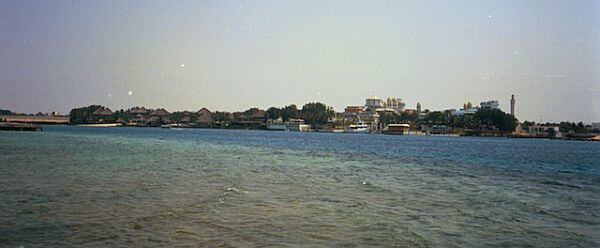
Jeddah has long been the gateway to the Arabian Peninsula for travellers, traders, and pilgrims on their way to Mecca.
Historically rich and ethnically diverse, Jeddah is a city of contrasts. Centuries old building made of coral limestone and seashells gathered from the reefs of the Red Sea sit alongside gleaming glass skyscrapers promoting Coca Cola and Seiko.
In 1947, Jeddah was still a small walled city of just 1.5 square kilometers. But in the last 60 years ago, Jeddah has outgrown its walls, becoming a sprawling metropolis of palaces, skyscrapers, opulent shopping malls, and sculpture lined streets
 Al- Balad, the historic center of Jeddah, is the heart of the city.
Al- Balad, the historic center of Jeddah, is the heart of the city.
It features narrow alleyways that are sheltered from the intense sun by old merchants’ houses, three and four stories high. Built of coral limestone and seashells, these centuries old buildings feature overhanging carved wooden bay windows (rawashin) and small balconies of lattice screens (shish) which served the dual purpose of privacy and air conditioning by catching the sea breezes.
During the day, Al-Balad is quiet, giving visitors the opportunity to wander around and appreciate the intricate craftsmanship of the architecture.
Many of the buildings lean at crazy angles, looking on the verge of collapse but this only adds to the character and atmosphere of the place.
The best-preserved example of this architecture is Nassif House in the middle of Al-Balad. With its four storeys in the front and seven at the back, it was once the tallest building in Jeddah. Built of coral limestone tied by teak beams, this fifty-room building was once home to over 100 members of the Nassif family.
Handed over to the government in the 1970s, it is now a museum open to the public
 At night, a transformation occurs in Al-Balad.
At night, a transformation occurs in Al-Balad.
The Souk Al Alawi comes alive.
Straight out of the days of Aladdin, it is a visual and olfactory delight.
Street hawkers call out to the jostling crowds as they pass by open front shops selling everything from spices, incenses, gold, carpets, and water pipes to wind up plastic toys.
Bartering and bargaining is encouraged.
But when it comes to the crunch, they don’t give the discount easily .
Often you have to haggle and appear to walk away before the price is agreed.
(photos @Liz Lewis 2002)
